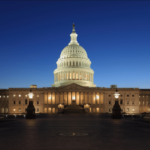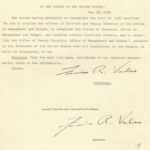In the Constitution, the Congress is given the sole power of impeachment and removing the President and all civil officers from office. This power of Legislative Branch provides a significant check over the Executive and Judicial Branches. This lesson provides explanations of the Constitutional basis of the power, the process for removing officials and the history of impeachments and removing these officials from office. It also provides discussions on the standards of impeachments and how those are interpreted by Congress.
The Powers of Congress
In this lesson, students will learn about the powers of Congress, how they have evolved throughout history, and their impact on public policy. Students will view C-SPAN video clips to learn about the types of congressional power and apply that knowledge by developing strategies to improve the effectiveness of Congress.
To Understand a Scandal: Watergate beyond Nixon
Even today, four decades after the events, Watergate still symbolizes all that is, and might be, wrong with the workings of the federal government, elected officials and, ultimately, with the political system itself. Free registration for students and teachers required to access resource.
Act III: How Did the Constitutional Convention Work Out the Details of Government?
This short video examines the role played by the Committee on Detail in defining the powers of Congress, the most important of which were the power to tax and the power to regulate commerce. The Committee wanted to promote an interstate commercial republic and specified congressional powers to achieve that goal. According to Professor Gordon Lloyd, the inclusion of the “necessary and proper clause” was the most significant contribution of this Committee.
Congress and the Legislative Branch: Lesson Plans & Resources

This Share My Lesson collection provides free lesson plans and resources to support teachers in educating students about the legislative branch of Congress. Students will learn about the powers of Congress and state legislatures, how those powers have been used or changed over time, and what issues face Congress today.
Arizona Legislature v. Arizona Independent Redistricting Commission (2015)
Did Proposition 106 violate the Elections Clause of the US Constitution by removing congressional districting power from the state legislature? The case summary provides the facts, and the Supreme Court’s answer to this question.
Congress at Work: The Presidential Veto and Congressional Veto Override Process

Students will use a facsimile of a vetoed bill and veto message to understand the veto and veto override process in Congress. Referring to the Constitution, students will match the Constitution’s directions to the markings and language of the bill and veto message. Students will then investigate motives for using the veto and override powers, and how the powers reflect the Constitution’s checks and balances.
Congress by the Numbers
Together, the U.S. House of Representatives and U.S Senate are called Congress, the legislative branch of the federal government. Congress has many powers including writing the nation’s laws, approving treaties, and declaring war.